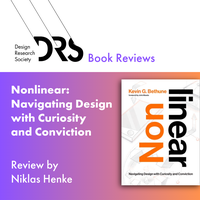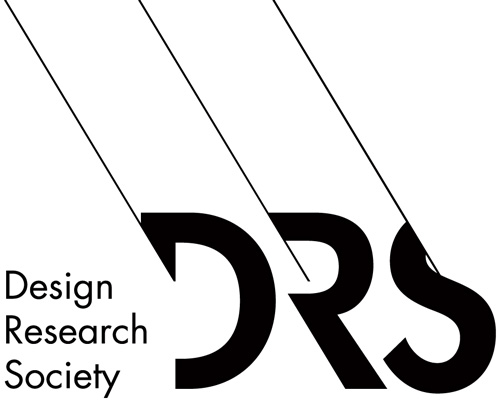
Book Details
Nonlinear. Navigating Design with Curiosity and Conviction.
Kevin G. Bethune, foreword by John Maeda
MIT Press
2025
ISBN: 9780262049436
Current design practices are under constant transformations, but despite this, certain challenges of design professions remain the same, such as bridging the gap between creativity, finance, and strategy. The problem is well known; many designers lack MBA acumen, and many strategists ignore the transformative power of design. To bridge both, Kevin G. Bethune describes in Nonlinear how to oscillate between engineering, design, and strategy, based on his international career in top strategy teams (e.g. at Boston Consulting Digital Ventures - BCGDV). To do so, he provides a detailed picture of the daily life of design projects, including typical design tools and processes – from product design for sneakers to storytelling for financial results at Nike. Bethune takes us on a journey along his thoughts on how to lead successful design teams (e.g. via assuring cultural diversity), or how to integrate creative ideas in business metrics (as necessary in many innovation projects). He explains how to navigate between the different languages of business, design, and engineering professions, in a way that is easy to understand for non-designers and non-UX-experts as well. Few people have mastered each of these professions as he did. The new profession that emerges by bridging these disciplines can best be summarized as “design strategist”. But the book is about more than the functional bridging of these disciplines. It’s about developing and keeping a creative and curious mindset. To put it in Bethune’s own words: “Nonlinear is about breaking linear, formulaic convention and liberating your and your team’s creative potential to realize meaningful innovation” (p. 27).
A reoccurring topic of the book is the role of qualitative and quantitative methods for design solutions. According to Bethune, “Qual is the clay, quant is the frame” (p. 181). Now what does that mean? Quantitative indicators can frame a problem and provide key numbers about market shares or financial performances, while qualitative insights provide in-depth knowledge about human motivations or emotions underlying the quantitative framework. The later thereby provides starting points to develop vectors for ideas and design solutions. To polish concept ideas, Bethune mobilises the archetypes from Joseph Campbell for storytelling, or the Maslow pyramid for persona modelling. In doing so, he indicates simultaneously advantages and scientific limits of these concepts. At the same time, Bethune outlines limits of design professions, as certain problems need more time than a one-week design sprint or hackathon. Bethune also criticizes that many design teams still do not mirror the diversity of societies, and that many designers intervene at the last step of a project – when the concept is already well defined. Instead, he pledges to integrate designers systematically throughout innovation projects. This critique becomes even more important since the problem is already well known as already described in design and innovation literature since several years (see for example the works of Don Norman).
The book is written in an easy-to-follow style, mobilizing multiple metaphors and enough concrete examples to easily understand Bethune’s arguments. The book mainly addresses non-designers and non-UX-researchers. Experienced designers and strategists are familiar with the described projects, challenges, and particularities. While it remains interesting to obtain a glance of the diverse experiences of a world-leading design strategist, this book does not provide further insights for the daily working life of design strategists. For those who are not familiar with psychological concepts as embodiment the book provides an overview of how to link design approaches to these neighbouring scientific concepts, which is indispensable to underpin creative concepts in industrial contexts. Nevertheless, further reading is necessary to understand the mentioned scientific concepts, as for example Embodiment, in more detail. For example, the descriptions about the role of human affects and their role for design perceptions need to be complemented with further literature from cognitive psychology, just as the author’s thoughts about the particularities of quantitative and qualitative methods should be complemented with further literature from epistemology.
Bethune concludes with hands-on recommendations for curious minds working at the intersection of design, innovation, and strategy. These daily working-life recommendations include for example handling one’s agenda by prioritizing between stakeholder management, communication production, and creative problem solving. But more than that, the book represents a source of inspiration and food for thought for anybody involved in design and innovation projects. Bethune underlines the importance of staying curious. He insists on the necessity of trying new things, and failing, and trying again: “You’re never wrong if you keep moving and learning” (p. 49). He concludes his book with the last sentence pledging to “Fall forward. Be nonlinear” (p. 201).
Niklas Henke is Scientific Work Package Leader at Capgemini Engineering in Toulouse. He works at the intersection of Design and Communication Research, combining artistic with scientific perspectives. He worked for innovation- and design / advertising agencies based in France and Germany, as Creative Strategist, User Interface Designer, and as a Freelance User Experience Re-searcher. His research focuses on the role of creativity and the human body in the context of modern technological transformations. He teaches theoretical and practical design and communication courses in Grenoble, Paris, Cologne and Duesseldorf.
